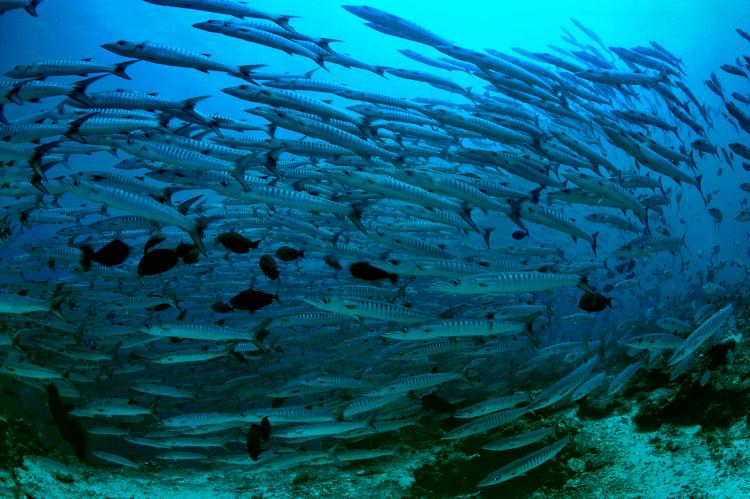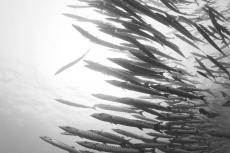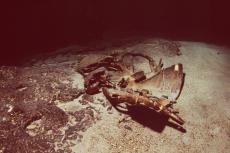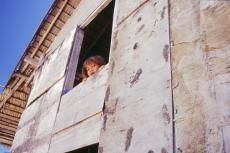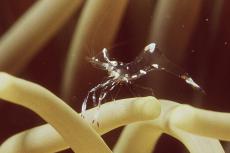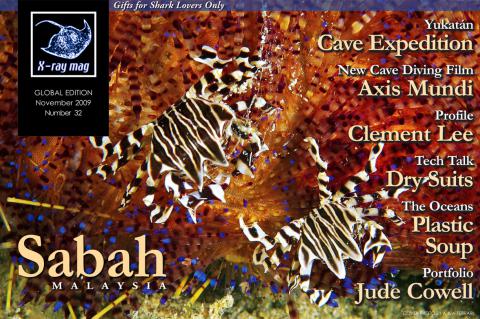Sipadan revisited
I’ve always been both somewhat envious and intrigued by what Sabah, Malaysian’s easternmost state have to offer the travelling visitor.
Tags & Taxonomy
Upon arrival, the provincial tranquillity and smaller scale of things in Sabah instills a sense of coming to a safe and calm place, which seems to go about matters in its own time and direction, unperturbed by unrest elsewhere on the globe. And Sabah has indeed come a long way in a short period of time, if the few glimpses these undersigned passers-by get from a airport transfers, hotel stays and excursions is anything to go by.
This time, we arrived at a new airport in Tawau—arriving at the old airport did feel like touching down on a couple of tennis courts—and the roads here are now in a much better state. Modern suburban residential complexes are gradually replacing the ramshackle shantytown of many areas we passed by. Malaysia is only 52 years old as a nation, but the determination with which they build their society never ceases to impress me, and returning here after so many years made the many changes stand out... but were they all for the better?
We were greeted in Tawau airport by Clement Lee, CEO of Borneo Divers and chairman of Sabah Tourism. After exchanging courtesies and the ritual “did you have a nice flight?” we soon drifted into a discussion about the development the region has been undergoing since Lee came to start his dive operations 25 years ago.
During most of our 50-minute transfer to Sandakan, we drove by seemingly endless stretches of oil palm plantations, which seem to have pushed the rainforest back into the distant horizon. Sandakan, once a sleepy fishing village and our point of departure for the boat transfer to Mabul, now seems like a bustling town.
As we enjoyed a smooth ride in a high speed boat skimming across the surface of the sea, I couldn’t help pondering how life must be like living in some of the rickety huts on stilts we passed—which have no fresh water or sanitation, let alone electricity—sitting way out there on the horizon in the middle of what seemed to be the open ocean, but must have been built on extensive mud flats and sandbars.
Diving
The range of options on offer within a short radius from Mabul Island is second to none. Sipadan Island, considered by many to be the best dive site on the planet, is but a short boat transfer away to the south. Mabul itself is one of the birthplaces of muck-diving, and with Kapalai nearby, there’s also unparalleled macro-diving. Plus, close to the mainland, you can dive in the mangroves.
But even with this diversity, it is probably safe to say that Sipadan remains the coveted star attraction, which pulls visitors from far and wide.
As such, the island has been and remains the centre of much controversy. It was the center of a lengthy battle between Indonesia and Malaysia, who vied for sovereignty over the island at the international court in Hague, which only in 2002, ruled in favour of Malaysia.
As the island’s ecosystem is fragile, the many concerns over the impact of tourism later led to clearing the island of the resort facilities there. Tight regulations were imposed on the number of permitted day visitors, the management of which still remains a very contentious issue between the operators who are all vying for a number of guest permits that is woefully short of the growing demand.
What I have seen over the years there leaves no doubt in my mind that these measures were necessary. Sipadan seems to be in a much better state now than it was in my previous visit.
Every day we saw massive schools of barracudas, trevallies and even humphead parrotfish. There were always many small sharks—predominantly the ubiquitous white tip sharks— patrolling the reefs or napping on the sandy patches. Looking around, umpteen turtles were all over the place. As a diver peers up from the sea floor, on can see the turtles as silhouettes against the water’s surface gliding gracefully along the reefs like soaring birds in the sky eclipsing the sun, or plainly snoozing in some crevice on the reef like hung-over teenagers on Sunday morning, totally unaffected by all the wheezing, bubbling visitors closing in to take snapshots with their underwater cameras.
There are about 13 dive sites around Sipadan. When the ocean is calm, it takes about 20 minutes to get from Mabul to Sipadan. Most of the diving in Sipadan is a combination of wall and drift diving. The visibility was never really great during the week we spent there—partly due to a couple of days of choppy seas that stirred up particles—but because there was always so much to see, we never really noticed, or least, it never became a concern.
As the day guest permit system worked during our visit, the defining measure of the permit was ‘a day’ not the number of dives permitted. Consequently, the excursions to Sipadan were conducted as full day outings with four dives and a lunch break in the middle.
At times, I felt that this regime was a little too rigorous, as the forth dive in a day often was of limited quality and use, among other things, since one had been building up nitrogen over the day, and so, there were decompression issues to consider. But hey, it’s a bit like complaining about being fed too much caviar and champagne. Sipadan is one of those blessed places where you seemingly can’t have a bad time even if you try.
Here, disappointment is if you only see a small school of fish and a couple of sea turtles.
Because of its relatively small size and it having dive sites all the way around its perimeter, it is always possible to find a sheltered spot on the leeward side on a windy day. One of my personal favourites remains Barracuda Point. I know, it has been covered ad nauseam in so many publications before—including this one—but it is not without merit. Here, you always seem to be able to find a huge school of circling barracudas or trevallies, which, if you move carefully, can end up completely encircling you. I get such of kick out of this—flying in formation inside a huge school of fish as if I am one of them. It always ends too soon, and like a five-year-old in an amusement park, I am always left wanting more when time is up.
Between dives, the boat goes back to the jetty, and we have a snack at the gazebo, which is built on the island. It is also here we have lunch after the second dive. The authorities have also built a proper toilet facility on the island. Fresh water is supplied by boat every day and pumped ashore—a reassuring sign that the facilities aren’t drawing on the small aquifer under the island.
Aside from the area around jetty, the gazebo and the toilet facilities, the rest of the island is now off limits for visitors, though there is a residing contingent of soldiers and park rangers overseeing and enforcing the protection measures, including keeping fishermen and poachers off the island.
Permit controversy
As this issue goes to press, the current system of day permits allows for 120 day visitors—no overnight stays are allowed anymore. With about 15 resorts each accommodating some 30-100 guests, many of which have come here to dive Sipadan in particular, it doesn’t take a rocket scientist to figure out that demand for day trips to Sipadan may outstrip supply by up to a factor of five to ten. During peak periods, vacationers who may come from afar could, in a worse case scenario, end up finding themselves going to Sipadan only once.
Curbing the number of visitors to Sipadan has been essential to protect the fragile island from being unsustainably exploited— let there be no doubt about that—but the way the permit system is currently set up leaves room for further improvement. What springs to mind is whether each granted visitor really needs or want to go there for the full day and have four dives each, as the fourth consecutive dive often ends up being so and so, if you are not the type who’s itching for having yet another dive logged in the book. Why not make it 2 x 240 half day permits, so twice as many may have a chance of going? The load on the island will be the same, or even less, as half day visitors will probably not have their lunch there.
In any case, when booking a trip to the area, pay close attention to the regulations and advice given on the various home pages and ask how many dives to Sipadan can be pre-booked or guaranteed.
There is also an interesting but almost perverse twist to the arrangement as well: many of the resorts are allotted the same number of day permits, just 14. So if you go for the big upscale resort accommodating up to 100 guests, which may be well booked, you could end up having far worse odds of going to Sipadan than if you stay with ...
( ...)
Download the full article ⬇︎
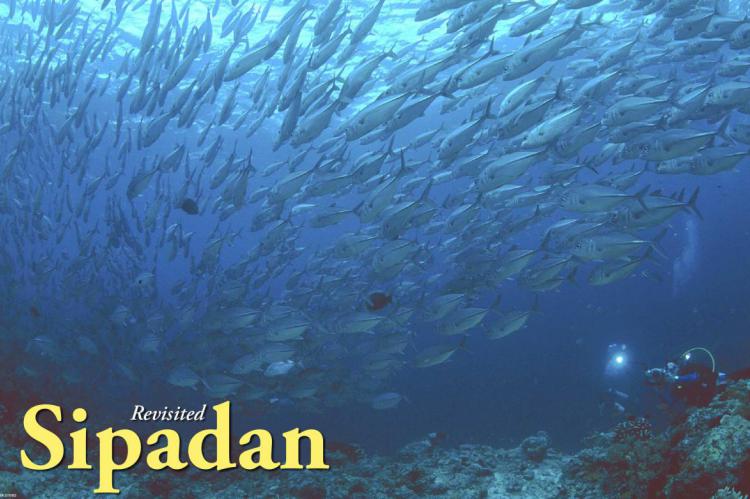
Originally published
X-Ray Mag #32
Sabah special - Reefs & Rainforests :: Pulau Lankayan - Sugud Islands Marine Conservation Area - Sepilok Orangutans - Kinabatangan River - Danum Valley Conservation Area - Sipadan, Mabul & Kapalai - Interview with Clement Lee :: Kids Love to Dive :: Archaeology; Underwater settlements explored in the Yucatán jungle :: Axis Mundi, the making of a film :: Drysuits; What to purchase and taking a look at the recent models and latest trends :: Photography; Tony White explains how he took that macroshot :: Review of the Poseidon/CIS-Lunar Disvcovery Closed Circuit Rebreather :: Dreamy underwater world of American artist, Jude Cowell


